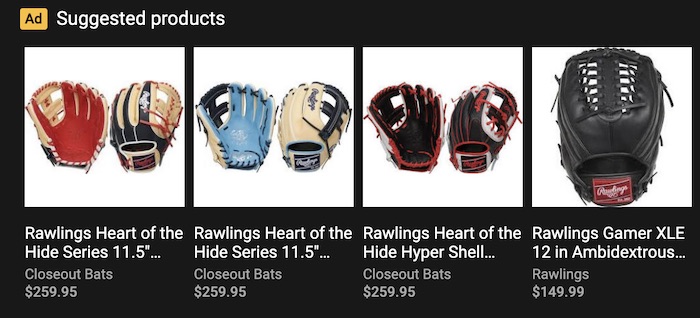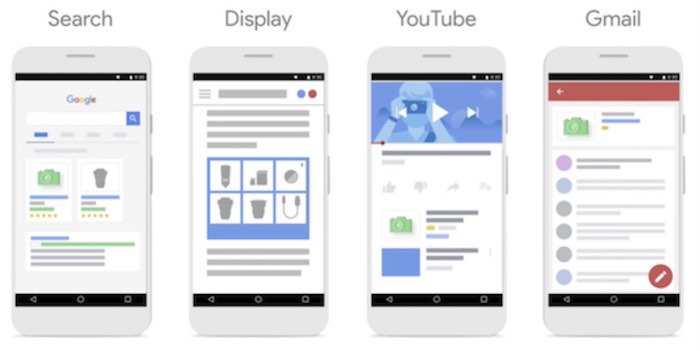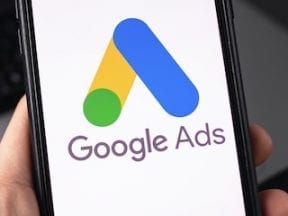I’ve written many articles in the last year that address Google Ads’ automation. Used carefully, automation — bidding, dynamic copy, scripts — can free up time for strategy.
In this post, I’ll focus on Smart Shopping campaigns for Google Shopping.
Smart Shopping campaigns combine existing product feeds with Google’s machine learning. Unlike standard Shopping campaigns that show ads on Google Search and search partners, Smart Shopping campaigns also show ads on the Display Network, YouTube, and Gmail.

This screenshot shows Smart Shopping ads on YouTube. Smart Shopping campaigns also show ads on Google Search, search partners, the Display Network, and Gmail.
Both Shopping campaign types can segment products by category, product type, margin percentage, and more. The main difference is that Smart Shopping campaigns don’t allow for more than one ad group. Though ad groups aren’t as consequential in Shopping campaigns (as opposed to Search), they allow for greater organization among product themes.
For example, I may create a standard Shopping campaign around “jackets” and create ad groups for:
- Men’s jackets,
- Women’s jackets,
- Kids’ jackets,
- Leather jackets.
The Smart Shopping campaign only allows one ad group per campaign. I could create four Smart Shopping campaigns for each jacket type, but the number of campaigns adds up quickly, and Google allows only 100 of them. Moreover, Google recommends more products in each Smart Shopping campaign to facilitate machine learning.
Shopping vs. Smart Shopping
Here are four key differences between standard Shopping and Smart Shopping campaigns.
Bidding strategies. Smart Shopping campaigns don’t allow manual bidding. The sole bid option is to “maximize conversion value.” This strategy requires conversion tracking and values (dynamic or static) to be assigned to all conversion types. Google will automatically update your bids to produce the highest conversion value. You can also assign a target return on ad spend.
You can’t set manual bids, but you can set bid adjustments for locations and ad schedules. For example, if New York sees higher revenue, you could increase your bid adjustment by up to 20 percent. You can also set seasonality adjustments for short periods when you expect changes in conversions, such as a Thanksgiving week sale, which may call for a conversion rate increase of 30 percent.
These bid adjustments help inform the algorithm in the absence of setting manual bids.
Remarketing. Smart Shopping campaigns can show on the Display Network via dynamic remarketing. Thus an active remarketing list is required. Audiences, including remarketing lists, can be implemented in standard Shopping campaigns, but they aren’t necessary.
Lack of settings. Smart Shopping campaigns lack key settings in standard Shopping campaigns. One glaring omission is the ability to set a campaign priority. When multiple standard Shopping campaigns have the same product, the higher priority campaign will show. Campaign priorities are set at low, medium, or high. Campaigns that target higher-margin items can prioritize over a general product type. Smart Shopping campaigns have no such priorities.
Smart Shopping campaigns cannot implement negative keywords (to prevent ads from showing on irrelevant queries). This inability is problematic, especially because Smart Shopping campaigns, unlike standard Shopping campaigns, do not disclose the actual search queries triggering the ads. This lack of query transparency is by far the biggest downfall of Smart Shopping campaigns.
Smart shopping ads. Smart Shopping campaigns can, again, show on Google’s Display Network, YouTube, and Gmail. Smart Shopping allows for multiple asset types, including:
- Images,
- Videos,
- Logo,
- Text.

This image from Google demonstrates how the ads can appear across the properties — Search, Display, YouTube, and Gmail.
Though the extra inventory is helpful, remember that ads will sometimes show based on interests and audiences instead of search queries. For example, conducting a Google search for “Keurig coffee maker” would produce Shopping ads for various Keurig coffee machines. But users who are viewing a video about making coffee could also see Shopping ads for Keurig coffee machines.
Testing Is Key
Should advertisers use Smart Shopping campaigns? Yes, with the caveat to always test. Smart Shopping campaigns offer insights that only Google can see. There are many hidden signals that the algorithm uses to show the ads for the highest conversion volume.
The downside is advertisers have less control. The inability to set manual bids, add negative keywords, and seek transparency from other Google properties is concerning.
The key, again, is testing against standard Shopping campaigns. Make sure that the same products cannot show in both campaigns to avoid contaminating the results.
For example, test “men’s jackets” in a Smart Shopping campaign and “women’s shoes” in a standard Shopping campaign. It’s not a direct comparison, but you’ll likely gain a good understanding of the results between the two campaign types.




